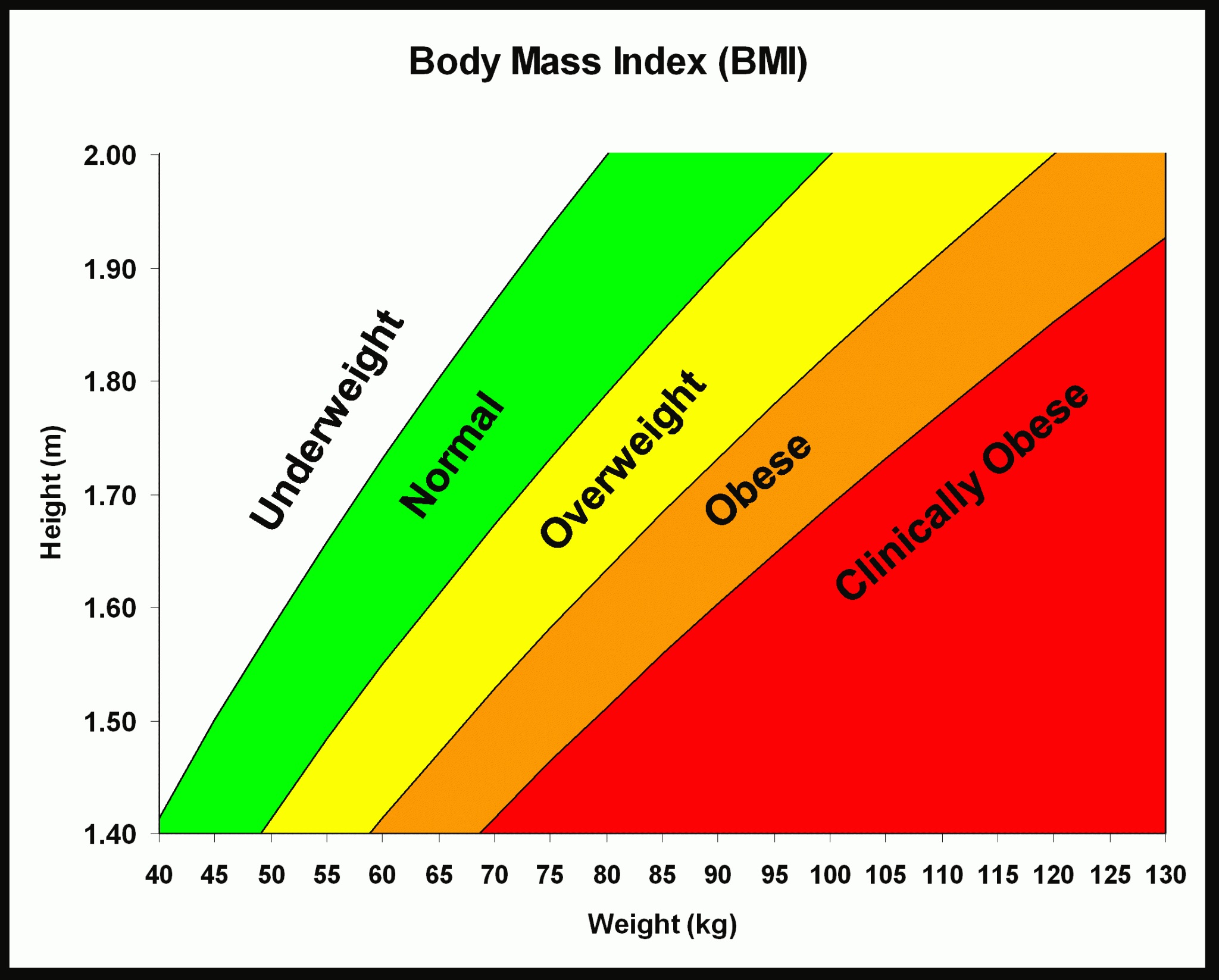Calculate your BMI
What is a healthy BMI?
In Singapore, the BMI cut-off figures were revised in 2005, motivated by studies showing that many Asian populations, including Singaporeans, have higher proportion of body fat and increased risk for cardiovascular diseases and diabetes mellitus, compared with Caucasians at the same BMI. The BMI cut-offs are presented with an emphasis on health risk rather than weight. For the interest of completeness, we also include the global standards set by the World Health
BMI Categories (Singapore):
< 18.5 : Risk of developing problems such as nutritional deficiency and osteoporosis
18.5 to 22.9 : Low Risk (healthy range)
23.0 to 27.4 : Moderate risk of developing heart disease, high blood pressure, stroke, diabetes
> 27.5 : High risk of developing heart disease, high blood pressure, stroke, diabetes
BMI Categories (WHO):
< 18.5 : Underweight
18.5 to 24.9 : Normal weight
25 to 29.9 : Overweight
> 30 : Obesity
How is BMI calculated and what is its history?
The Body Mass Index (BMI) was developed by the World Health Organisation (WHO) and allows people to quickly and easily establish whether they are under weight, normal weight, overweight or obese.
It is defined as the weight in kilograms divided by the square of the height in metres (kg/m2). For example, an adult who weighs 70 kg and whose height is 1.75 m has a BMI of 22.9.
The BMI formula was originally designed by a statistician from Belgium named Adolphe Quetelet. Early in the 1800s, he created the BMI formula, or the Quetelet scale as it was then known, while doing social research. It was initially meant to measure the body mass index for population groups not individuals. It was used in the study of diet and activity levels for specific social groups.
The term body mass index or BMI began to be used in the early 1970s because of scientist Ancel Keys who was also doing a social study similar to Quetelet’s. However the term caught on and became popular. More and more health care professionals, fitness enthusiasts and individuals began to use the BMI as a guideline for healthy weight determination. It is now a very commonly used tool in the war on obesity.
Caveat
The results, cut-off values and charts are applicable to adults only.
The above cut-off might not be significant for professional athletes who have excess muscle mass or pregnant women.
BMI is an indicator only and does not justify by itself any changes in your eating or exercising habits.
JustRunLah! does not guarantee the accuracy of information on this page.
Always consult a certified medical doctor.
Sources
– www.nhs.uk/tools/pages/healthyweightcalculator.aspx
– www.bmicalculator.org
– www.hpb.gov.sg
– www.sgh.com.sg


